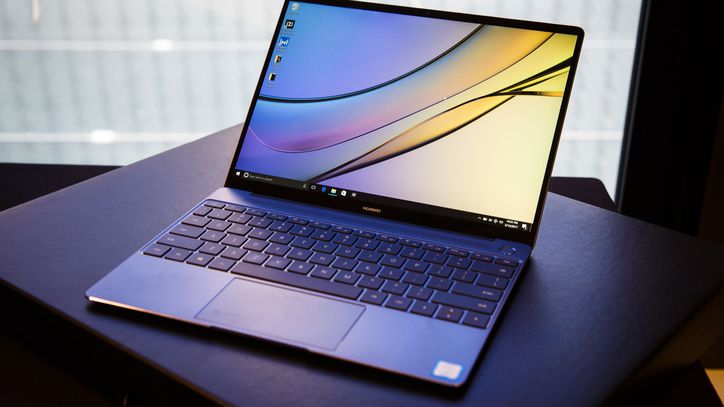As phones and laptop go all-screen, cameras are going into hiding


The video chat camera in Huawei's Matebook X Pro pops up from under a keyboard key.
MWC 2022
The release of the LG G6 last year, with its tall aspect ratio and minimal top and bottom bezels, placed a new focus on screen-to-body ratio for engineering bragging rights.
The desire to minimize the visible edges of devices drove Essential and Apple to implement notches -- areas housing cameras and other electronics -- that intrude into the area of the display. At the introduction of the iPhone X, Apple talked up the density of components that went into minimizing the notch as one of its greatest engineering feats.
The notch is notable not only for what it contains, though, but for its broader implications for other design decisions from device makers. In Apple's case, the war against the bezel claimed Touch ID as a casualty. While its replacement, Face ID, has worked well enough for justify removing Touch ID, there are situations where it would still be nice to have the fingerprint recognition option. For example, many secure areas require visitors to tape over a camera.
A number of Chinese device manufacturers have implemented clever workarounds for dealing with the shrinking space for electronics on the face of devices. Xiaomi was one of the first to introduce a nearly bezel-free phone design with the Mi Mix. Like the Essential smartphone that followed it, it has a small "chin" at the bottom of the device.
However, unlike the Essential and Apple phones, it dispenses with a notch, instead placing the camera below the screen. Dell has resorted to a similar placement with its ultra-thin screen borders of its XPS 13, resulting in video chats that can draw focus to any number of the participants' chins.
At Mobile World Congress, Huawei unveiled its attempt to unseat the XPS 13's prominence in the the thin-bezel camp with the MateBook X Pro, which the company claims has a screen to body ratio of 91 percent. The laptop's screen leaves so little room for a front-facing camera that Huawei has camouflaged it under a key in the function key row from which it pops up when pressed.
And if the idea of a popup camera can work for a laptop, it can also work for a smartphone. That's the idea behind the protruding camera in the Apex smartphone concept from Vivo, one of the trio of smartphone brands from Chinese smartphone giant BKK Electronics.
Having components spring from the edges of electronic devices isn't new. Its history extends back to flash bulbs on analog cameras, modem and Ethernet connectors on laptop expansion cards from the heyday of PCMCIA, and even, in the case of 1993's odd HP OmniBook 300, a pop-out mouse. But these recessed components were hidden to produce a more streamlined profile or to offer a degree of protection, something that previously hasn't been an issue for the tiny cameras inside laptops and smartphones.
Still, while these designs represent fresh thinking and include side benefits (Pop-out cameras can provide an extra degree of protection against surreptitious recording by hackers.), it's difficult to see such designs becoming a long-term escape route from the ever-encroaching display.
While Huawei, for example, says that the mechanism on keyboard-embedded camera can stand up to a large number of openings and closings, such accommodations introduce a mechanical failure point in an industry where the inexorable trend is toward fewer moving parts.
In addition, particularly for smartphones, they introduce potential points of entry for water and dust at a time when Bluetooth, wireless power, and eSIMs are attacking the last roadblocks toward the sealed smartphone.
Even as Android phone developers begin implementing notches that resemble the one on the iPhone X -- a phenomenon that will likely continue as new chipsets better support depth-sensing -- the long-term answer likely lies in embedding components behind the display.
As I wrote when discussing how other companies have managed fingerprint readers, Synaptics has demonstrated fingerprint recognition that can work over a display and requires no extra real estate.
But other components in the iPhone X's notch, including the dual cameras required for depth sensing camera, remain a challenge to be dealt with via relocation, stealth or, in what is becoming a last resort, a small bezel.
PREVIOUS AND RELATED COVERAGE
Touch-based identity faces an uncertain future after Face ID
Touch ID eased smoothly into the iPhone user interface and worked like magic when it debuted. Now that Apple is moving away from fingerprint reading, fingerprint sensors are searching for a new home on the phone.
This phone's camera pops up like toast to take your selfie
The Apex can also read two fingerprints you scan on-screen.
Huawei Matebook X Pro hides a camera in its keyboard
The Matebook X Pro laptop is only the second from the Chinese-based company.